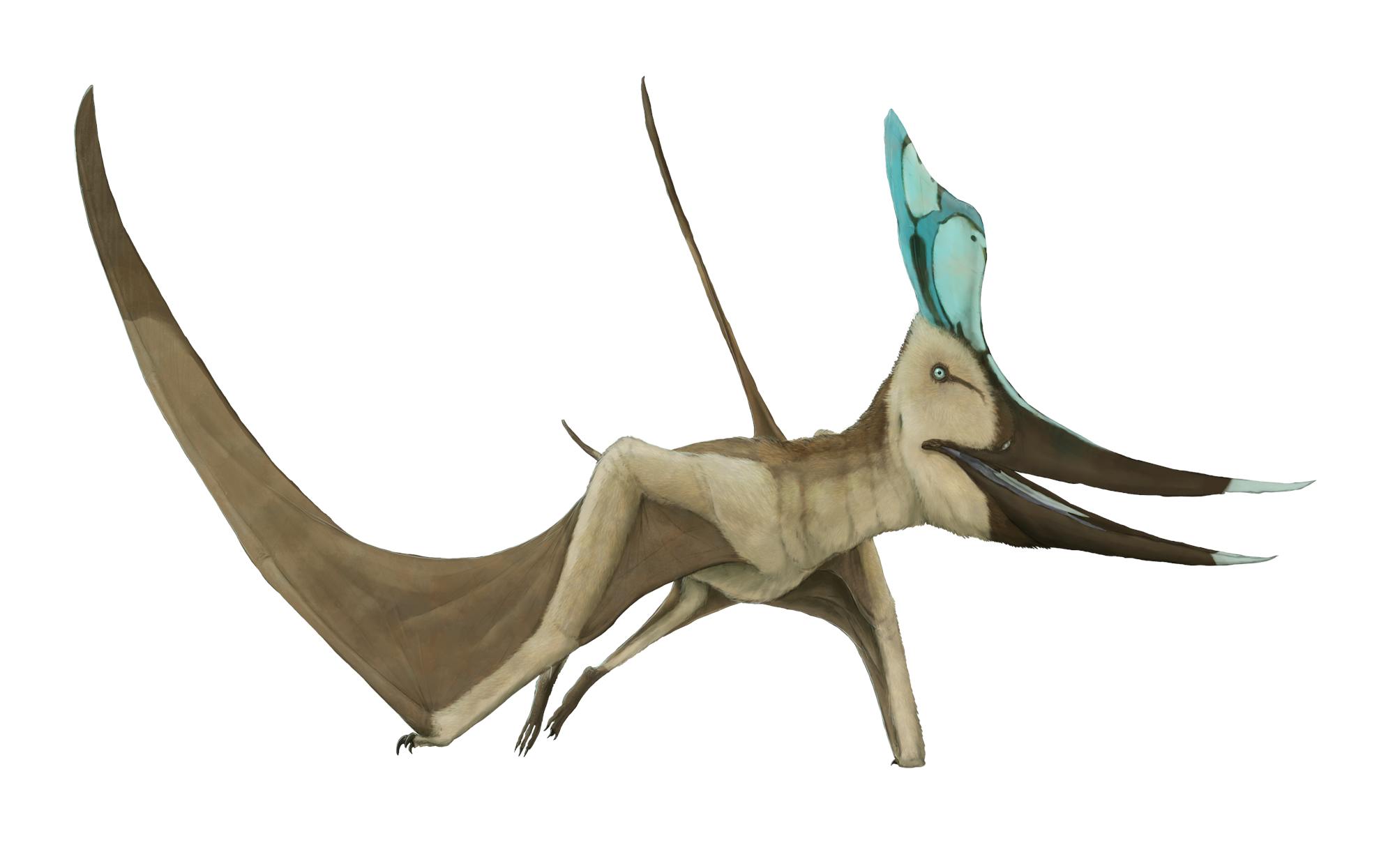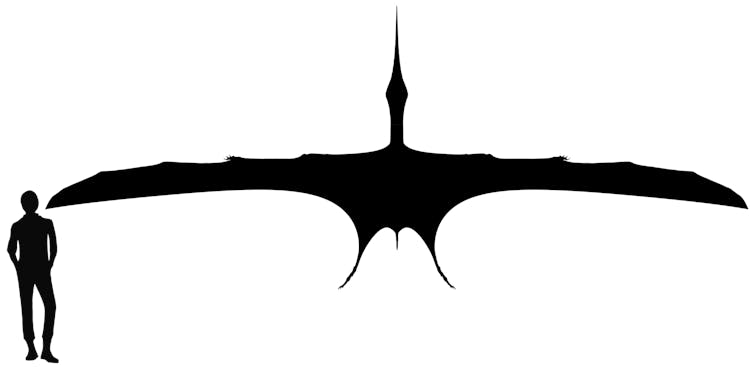


Geosternbergia sternbergi is known from dozens of partial specimens discovered in Late Cretaceous chalk deposits in Kansas. First named in 1966 as a second species of Pteranodon, P. sternbergi, it was later given a unique genus name in 1978. Both the genus and species are named for paleontologist George F. Sternberg who discovered the first specimens from the Niobrara Formation in 1952.
Geosternbergia is one of the largest known pterosaurs, with a wingspan of over 7 meters (24 feet). The skull is long and pointed measuring over one meter (3 feet) in length. Geosternbergia was completely toothless and both upper and lower jaws curved upward at the tip. Like its close relative Pteranodon, it bore a large crest arising from the rear of the skull. The crest was tall and somewhat rectangular, rising over 50 cm (18 inches) above the eyes and nose. Geosternbergia's neck was short and it had a compact muscular torso. The wings were very long and narrow for an animal of its size, like modern soaring birds. There are several specimens that appear to be smaller adults with shorter crests, and have been interpreted as females, while the larger specimens are thought to be males.
At the time Geosternbergia was alive, about 86 million years ago, a shallow sea crossed much of North America, joining the Gulf of Mexico with the Arctic Ocean. This sea was warm, and teeming with life. Not only were there fish, squid, and ammonites, but marine reptiles like plesiosaurs, mosasaurs, and turtles. Geosternbergia is only known from marine sediments in the central United States, far from the ancient shorelines. It likely soared over the water using its long narrow wings and plucked fish from near the surface. Geosternbergia may have even dove into the water in search of prey.
Geosternbergia and its close relative Pteranodon are pteranodontids, large-bodied toothless marine fishers known from Late Cretaceous rocks of the central part of the United States. Many paleontologists still regard Geosternbergia as a second species of Pteranodon rather than a unique genus. In fact, Geosternbergia, lived before Pteranodon and may be its direct ancestor. Pteranodontids are part of a larger lineage of short-tailed pterosaurs known as the ornithocheiroids, all large-bodied marine fishers, although most ornithocheiroids retained teeth. The two well known species of pteranodontids are known from hundreds of specimens all from the Late Cretaceous, but there must have been a long-lived and so far undiscovered lineage stretching back at least 50 million years before the Niobrara Chalk was deposited.
